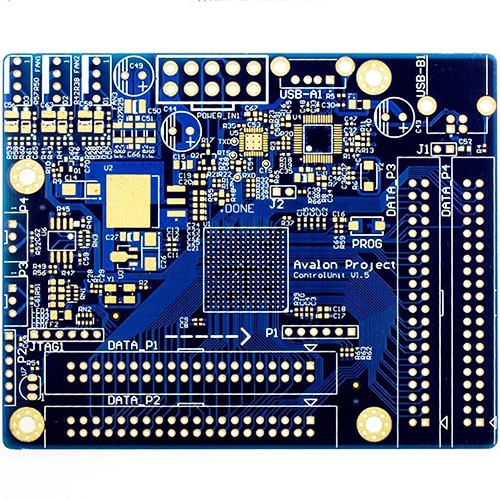What Makes High Frequency PCB Essential in Modern Electronics?
2025-08-08
When it comes to advanced electronic devices, I often wonder: What exactly is the role of High Frequency PCB in today's technology? From my experience working with Guangdong Viafine PCB LIMITED, I can say that High Frequency PCBs are truly the backbone of modern high-speed circuits.
What is the primary function of High Frequency PCB?
High Frequency PCB, also known as RF PCB, is specially designed to operate at high frequencies, typically above 1 GHz. The key function is to handle signals with minimal loss and distortion, ensuring high-speed communication and signal integrity. These PCBs are made from materials with low dielectric constants and minimal signal interference.
In our manufacturing process, we focus on materials such as PTFE and ceramic-filled composites to achieve the desired electrical properties. This ensures that the final product performs reliably in applications like 5G communication, radar systems, satellite transmission, and high-speed data links.
Table 1: Typical Materials Used in High Frequency PCB
| Material Type | Dielectric Constant (Dk) | Loss Tangent (Df) | Typical Applications |
|---|---|---|---|
| PTFE (Teflon) | 2.1 – 2.3 | 0.0002 – 0.0004 | RF, Microwave, 5G antennas |
| Ceramic-filled PTFE | 3.0 – 4.5 | 0.001 – 0.005 | Satellite, Aerospace |
| Rogers Materials | 2.2 – 3.8 | 0.0009 – 0.002 | High-frequency circuits |
How does the use of High Frequency PCB affect device performance?
You might ask, how significant is the impact of High Frequency PCB on the overall device performance? From my own experience with Guangdong Viafine PCB LIMITED, the answer is: it's huge. Proper High Frequency PCB design and fabrication drastically reduce signal losses and crosstalk. This leads to better signal clarity and faster data transmission speeds, which are critical in telecommunications and aerospace.
Our customers often report that after switching to High Frequency PCBs, they observe improved signal quality and reduced electromagnetic interference (EMI), leading to more stable and efficient device operation.
Key Benefits of High Frequency PCB:
-
Enhanced Signal Integrity: Minimizes signal attenuation and distortion.
-
Higher Data Rates: Supports faster communication speeds.
-
Improved Thermal Stability: Maintains performance at varying temperatures.
-
Reduced Electromagnetic Interference: Ensures device reliability in complex environments.
Why is High Frequency PCB becoming increasingly important in the industry?
I frequently get asked, why is there a growing demand for High Frequency PCB in recent years? The rapid development of technologies such as 5G, IoT, and high-speed wireless communication means devices require PCBs that can handle higher frequencies and more complex signals. The traditional FR4 PCBs simply cannot meet these requirements.
At Guangdong Viafine PCB LIMITED, we have adapted to this trend by investing heavily in advanced materials and precision manufacturing technologies to produce high-quality High Frequency PCBs. This is why many leading electronics manufacturers choose us as their trusted supplier.
Summary of Importance:
| Aspect | Description |
|---|---|
| Market Demand | Rising need for faster, more reliable communication systems. |
| Technological Advances | Growth in 5G, satellite tech, aerospace applications. |
| Manufacturing Needs | Precise material selection and controlled processes required. |
| Competitive Advantage | Better device performance and longer product lifespan. |
In conclusion, High Frequency PCB plays an indispensable role in ensuring the high performance and reliability of modern electronic devices. Through my hands-on experience with Guangdong Viafine PCB LIMITED, I have witnessed firsthand how choosing the right High Frequency PCB can transform a product's capabilities.





